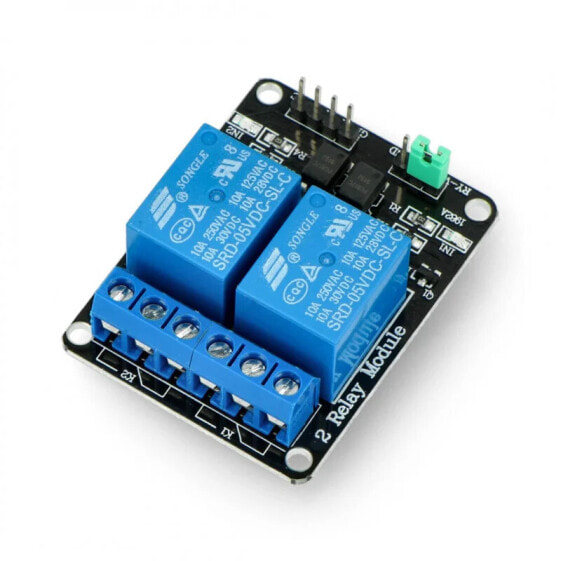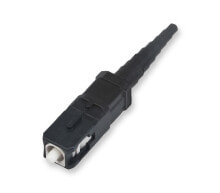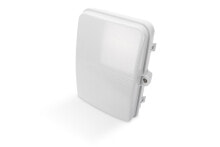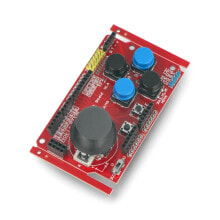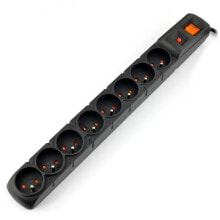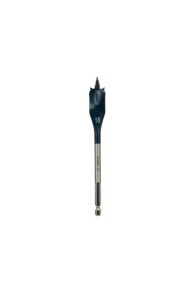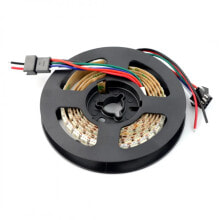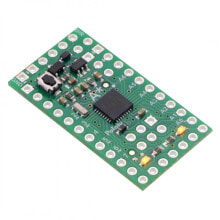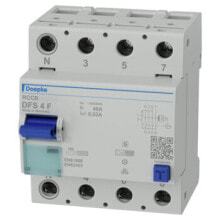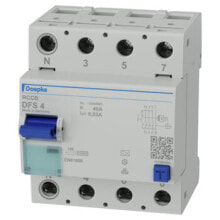Iduino relay 2 channel module with optoisolation - 10A / 240VAC contacts - 5V coil
Бестселлер
- Артикул:
- 42766312
3 634 AMD
Характеристики
Прочие свойства
- EAN
- 5903351242332
- Бренд
- Iduino
Свойства
- Каналы
- 2
- Подключение
- Digital I / O
Описание
Description of product: Iduino 2 relays module - channels with optical insulation
Module with two SRD-05relays with the coil powered with a voltage of5 Vandoptical insulationof the input, and with the mounting holes. The system allows you to controlactuators using the microcontroller ports or any development kit.
The connection of the relays moduleFor proper operation, it is sufficient to connect the power of the relay coil and the digital control signal. Pins are the standard goldpin straps with the pitch of 2.54 mm, which enable the connection using the popular connecting cables. For connecting the actuator, use the ARK screw connection.
The relay has the following pins
- VCC- power of the optoinsulation
- COM- power supply of the relay coil, by default it is connected to GND by jumper
- IN1, IN2- control input of the relays, activated by the low status
- GND- ground of the system, all the GND pins are connected together
- KF (ARK)connectors- the relay contacts are connected in accordance with the pattern on the board of the module.
- Driver of the lighting
- The driver of the actuators
- Switch for electric devices, includingthe motors
- The VCC supply voltage: 5 V
- Activated by the low status
- Relay: SRD-05VDC-SL-C (documentation)
- Coil voltage: 5 V
- The maximum voltage of the contacts: 250 VAC, 110 VDC
- Maximum current: 10 a
- Board sizes: 50 x 38 mm
- Diameter of mounting holes: 3 mm
- Documentation of the relaySRD-05VDC-SL-C
- Example of connecting a relay to the Raspberry Pi
